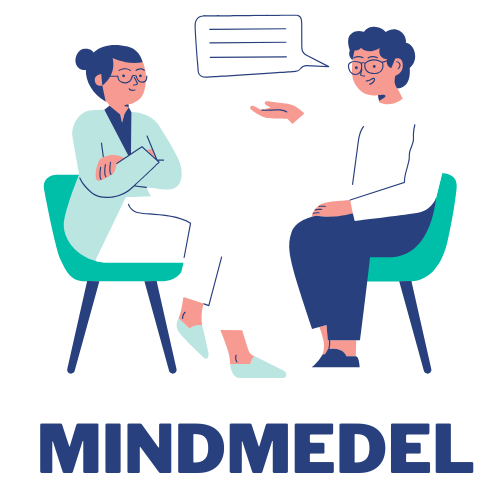Emotional Distress Lawsuit: Understanding Your Rights and Options
Life’s challenges can leave emotional wounds that are often harder to heal than physical injuries. Whether it’s a toxic workplace, traumatic incident, or intentional harassment, the psychological toll can be profound. But did you know the law may provide you with an opportunity to seek justice for emotional harm caused by others?
This blog combines all the essential details about emotional distress lawsuits, along with real-life examples (with names changed for confidentiality) to guide you in understanding your rights, the process, and how to navigate this complex legal area.
Key Takeaways
- Emotional distress lawsuits provide justice for psychological harm caused by negligent or intentional actions.
- Plaintiffs must present strong evidence, including medical records and expert testimonies, to support their claims.
- Emotional distress claims fall into two categories: negligent infliction of emotional distress (NIED) or intentional infliction of emotional distress (IIED).
- State-specific laws and statutes of limitations play a critical role in these cases.
- Consulting an experienced attorney can significantly improve your chances of success.
|
| More to Explore for Your Interest: You will also Enjoy Reading |
| 1 | |
| 2 | |
| 3 | Can You Sue Someone for Emotional Distress: 10 Hidden Secrets |
What is an Emotional Distress Lawsuit?
Definition and Scope
An emotional distress lawsuit is a legal claim that seeks compensation for psychological suffering caused by another party’s actions. Unlike physical injuries, emotional distress includes conditions like anxiety, depression, and PTSD.
For example, Laura, a teacher, was humiliated by her employer in a staff meeting. The constant stress and embarrassment led to severe anxiety. She filed an emotional distress lawsuit and was awarded damages.
Types of Emotional Distress Claims
- Negligent Infliction of Emotional Distress (NIED):
NIED occurs when emotional harm is caused unintentionally due to someone’s carelessness.- Example: James witnessed a tragic car accident caused by a drunk driver. Although uninjured, the trauma led to severe emotional distress. He successfully filed an NIED claim against the driver.
- Intentional Infliction of Emotional Distress (IIED):
IIED involves deliberate actions intended to cause emotional harm.- Example: Emily’s ex-partner spread harmful rumors about her online, causing depression. Emily sued for IIED and won her case.
Disclaimer: Names and scenarios in these examples have been changed to protect confidentiality.
Legal Requirements for Filing an Emotional Distress Lawsuit
Proving Emotional Distress
To succeed in an emotional distress lawsuit, you need to provide:
- Medical Documentation: Evidence from therapists, psychologists, or psychiatrists.
- Witness Statements: Testimonies from friends, family, or coworkers.
- Daily Impact Logs: Journals documenting how the emotional distress affects your life.
Role of State Laws
State-specific laws heavily influence these claims:
- California: Allows emotional distress lawsuits even without physical harm.
- Texas: Often requires evidence of physical symptoms accompanying emotional harm.
Pro Tip: Consult with an attorney to understand the specific requirements in your state.
Can You Sue for Emotional Distress Without Physical Harm?
Legal Precedents
Courts in the U.S. have recognized emotional distress as a standalone claim in many cases.
- Example: Jennifer was falsely accused of theft at work. Though uninjured, the humiliation and anxiety led to a successful lawsuit.
Exceptions and Challenges
Without physical symptoms, proving emotional harm can be challenging. States like New York and Florida are more lenient, while others require strong evidence, such as medical diagnoses.
Emotional Distress Lawsuit Process: Step-by-Step
Evaluating Your Case
- Consult a qualified attorney.
- Gather medical records, emails, and evidence of the defendant’s actions.
Filing the Lawsuit
- Draft a complaint detailing your emotional distress.
- File it with the appropriate court and notify the defendant.
Discovery Phase
During this phase:
- Both sides collect evidence and depose witnesses.
- Expert testimony is often a key component.
Settlement vs. Trial
While many cases settle out of court, some proceed to trial if no agreement is reached.
Real-Life Examples of Emotional Distress Lawsuits
Workplace Harassment
- Case: Lisa, a marketing professional, was constantly berated by her manager in front of colleagues. The harassment caused anxiety, forcing her to resign. She sued and received $85,000 in damages.
Online Defamation
- Case: Mark, a small business owner, was falsely accused of unethical practices by a competitor. The defamation caused severe anxiety and reputational damage. Mark won a six-figure settlement.
Disclaimer: Names have been altered to protect privacy.
Common Defenses in Emotional Distress Lawsuits
Lack of Evidence
Defendants often argue insufficient proof. Strong medical documentation and witness testimonies are crucial.
Preexisting Conditions
The defense may claim your distress was caused by preexisting mental health issues. Demonstrating how the defendant’s actions exacerbated your condition can refute this.
Statute of Limitations
Lawsuits filed after the statutory deadline are typically dismissed. Be mindful of your state’s timeframe.
Damages in Emotional Distress Lawsuits
Types of Damages
- Compensatory Damages: Cover therapy costs, lost wages, and medical expenses.
- Punitive Damages: Penalize the defendant for egregious misconduct.
Calculating Damages
Courts evaluate factors like:
- Severity of distress.
- Duration of psychological harm.
- Impact on daily life.
Hiring the Right Attorney for an Emotional Distress Case
What to Look For
- Experience in handling emotional distress claims.
- A strong track record of success.
Questions to Ask
- How will they prove emotional harm in your case?
- What are their fees and payment terms
Latest research findings on Emotional Distress:
1. Psychological Distress Following Trauma and Its Impact on Mental Health
This study investigates the long-term emotional and psychological distress that occurs following trauma and its contribution to conditions like PTSD, anxiety, and depression. The findings suggest that emotional distress due to trauma not only affects immediate mental health but also creates enduring vulnerabilities for future psychological challenges. Read the full study on PubMed
2. The Role of Emotional Distress in Workplace Harassment Cases
A recent analysis published in the Journal of Applied Psychology explores the connection between emotional distress and workplace harassment, revealing that persistent harassment leads to significant emotional distress, which in turn results in increased absenteeism, lower productivity, and higher turnover rates. The study underscores the need for effective intervention strategies. Access the full research here
3. Emotional Distress as a Predictor of Chronic Illness
This study explores how prolonged emotional distress can be a significant predictor for the development of chronic illnesses, such as cardiovascular disease and diabetes. The authors argue that the cumulative effects of emotional distress can affect both mental and physical health outcomes, emphasizing the need for comprehensive treatment approaches. View the article on APA PsycNet
4. Social Media and Emotional Distress: A Double-Edged Sword
This research examines the effects of social media on emotional distress, particularly in adolescents. It highlights how social media use can contribute to emotional distress through cyberbullying and social comparison, while also noting that some individuals find positive emotional support online. The study calls for greater awareness and regulation of online interactions. Find more details on Google Scholar
5. Cognitive Behavioral Therapy for Emotional Distress in Patients with Chronic Pain
In this study published in the Journal of Pain, researchers explore how cognitive behavioral therapy (CBT) is used to manage emotional distress in patients suffering from chronic pain. The results suggest that CBT can significantly reduce emotional distress, improving both mental and physical health by teaching coping mechanisms for dealing with pain-induced stress. Access the full study on PubMed
These recent findings offer valuable insights into various aspects of emotional distress, its effects, and potential interventions for alleviating its impact.
Emotional Distress Lawsuit Common Questions
Can emotional distress lawsuits be filed alongside other claims?
Yes, they are often combined with claims like defamation or personal injury.
How long do these lawsuits typically take?
Depending on complexity, they can take 6 months to 3 years.
What are the chances of winning an emotional distress case?
Success depends on the strength of your evidence and your attorney’s expertise.
Conclusion
Emotional distress lawsuits empower individuals to seek justice for psychological harm. By understanding your rights, gathering strong evidence, and consulting with an experienced attorney, you can hold the responsible parties accountable.
If you believe you’ve experienced emotional harm, don’t hesitate to explore your legal options. Your mental health matters, and the law is here to protect it.
Disclaimer: Names and scenarios have been altered for confidentiality.
Frequently Asked Questions
Q No. 1: Is suing for emotional distress worth it?
Answer: Suing for emotional distress can be worth it if you’ve experienced significant psychological harm due to someone’s negligent or intentional actions. Compensation can cover therapy costs, lost wages, and punitive damages, helping you recover financially and emotionally. Consult an attorney to evaluate your case’s strength.
Q No. 2: How do you prove you have emotional distress?
Answer: Proving emotional distress requires medical records, therapy notes, witness testimonies, and expert opinions from psychologists. You must demonstrate a clear link between the distress and the defendant’s actions, supported by evidence of anxiety, depression, or other psychological conditions.
Q No. 3: How much can you get for suing for emotional distress?
Answer: Compensation varies based on the severity of distress, duration, and financial losses. Emotional distress lawsuits can yield settlements from thousands to millions of dollars, depending on evidence, state laws, and the defendant’s intent. An experienced attorney can provide a case-specific estimate.
Q No. 4: What qualifies as emotional distress?
Answer: Emotional distress refers to psychological suffering caused by another’s actions. Examples include anxiety, depression, PTSD, or humiliation due to harassment, defamation, or witnessing traumatic events. The distress must significantly impact your daily life to qualify for legal claims.







